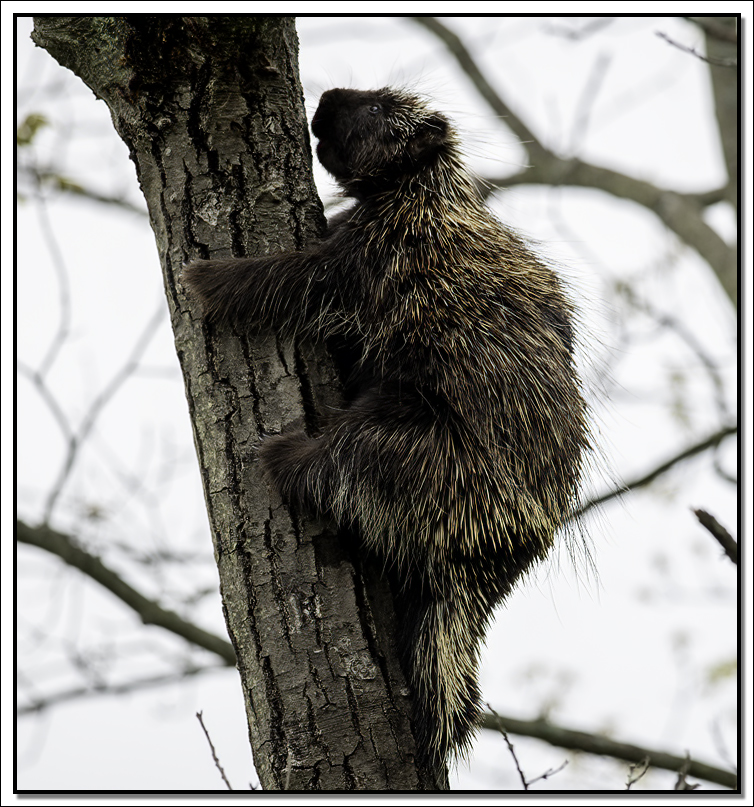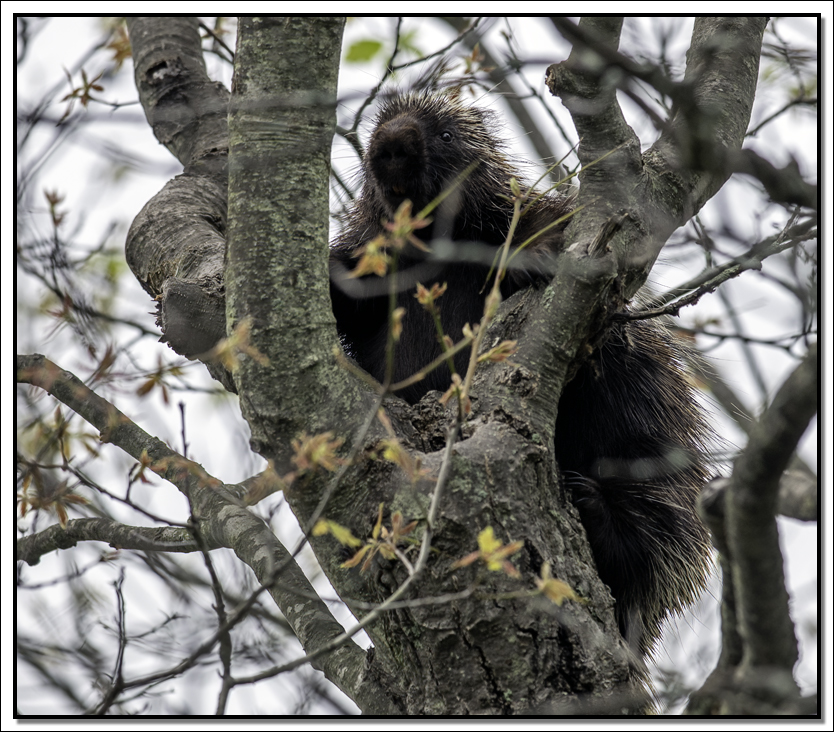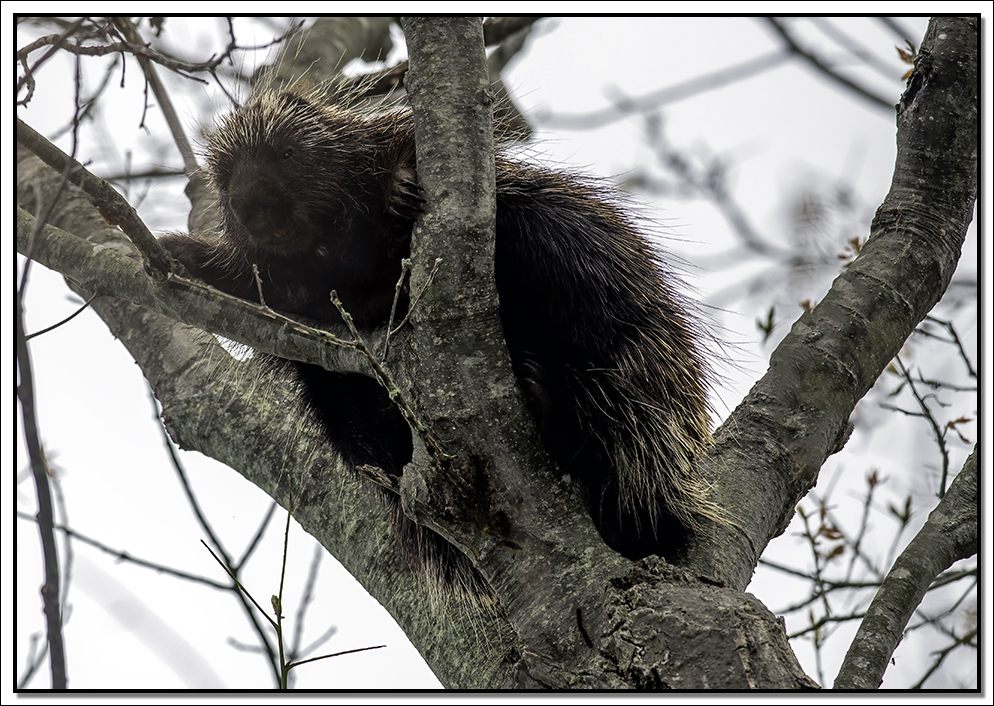PORCUPINE
North American porcupine (Erethizon dorsatum)
All Wildlife and plants have come up with inventive ways to unsure their survival. The porcupine’s defensive properties has to be up there as one of the strangest. Armed with formidable quills, numbering about 30,000, the are met with little resistance. The quills are actually modified hairs with tiny overlapping barbs. When attacked, the porcupine will lower its head and lash out with its tail. Quills from the tail can be easily released and become embedded in the attacker. The attacked becomes the victim. The hollow barbs expand, burn and work their way into the flesh of the victim.
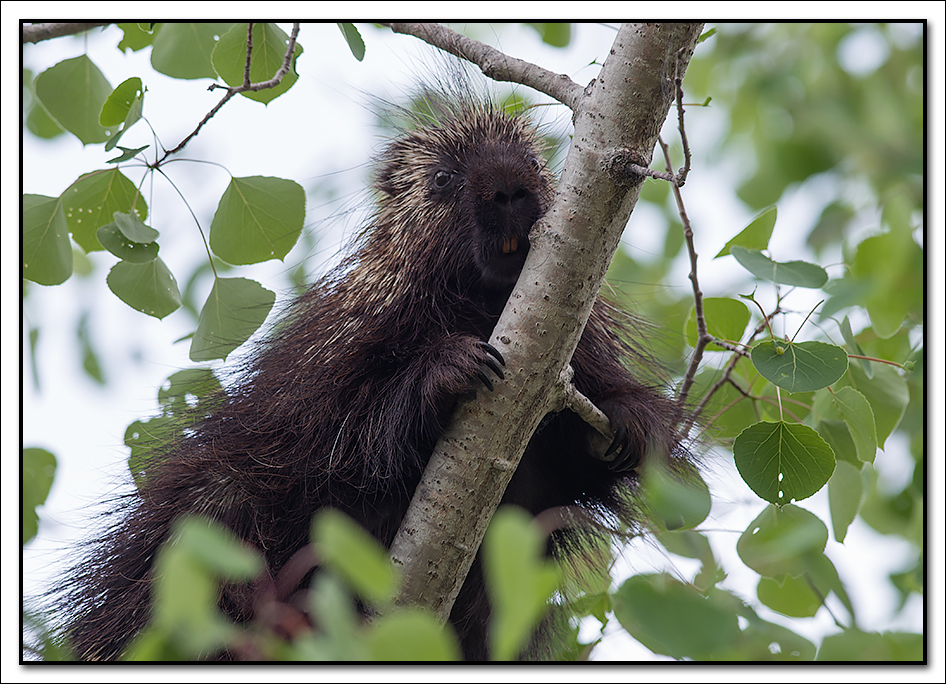
The North American porcupine is an herbivore; it eats leaves, herbs, twigs, and green plants. In the winter, they mainly eat conifer needles and tree bark. It often climbs trees to find food.
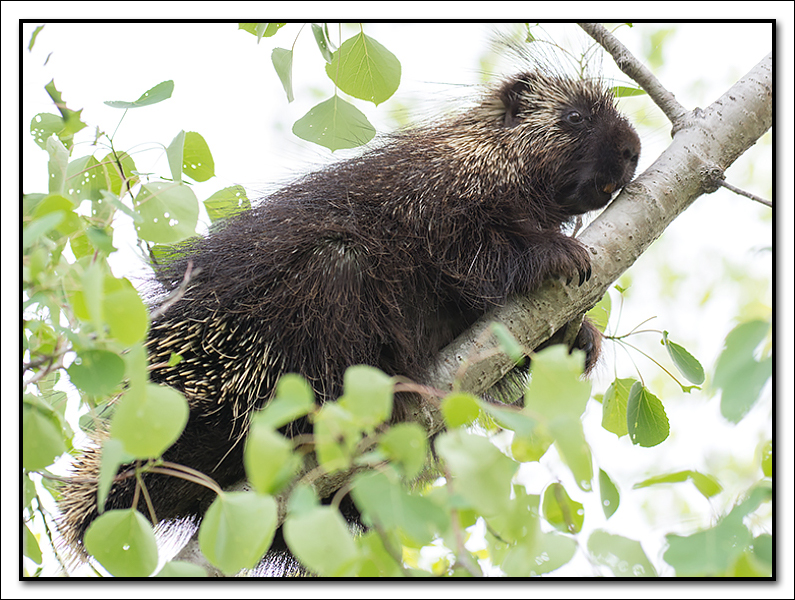
Porcupines are slow moving and have poor eyesight. During the summer, they often rest in trees. They do have some natural enemies including fishers, wolverines, coyotes, wolves, bears and humans. Although they defend themselves from most predators, one species is a real problem; the Fisher. The fisher has two advantages. First, they are capable tree climbers. Secondly, they are very fast and will run circles around the porcupine and bite at its unprotected face. Eventually the porcupine will weaken and the fisher will flip it over and kill it.
Because of they are slow moving, they are often hit by motor vehicles while crossing roads.
